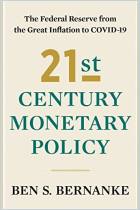加入 getAbstract 阅读摘要

加入 getAbstract 阅读摘要
Dana M. Peterson and Hollis W. Hart
Executive's Guide to Fed Policy and Associated Risks: Part 1
Understanding the Role of the Fed and the Tools at Its Disposal
The Conference Board, 2021
看看什么内容?
How the US Federal Reserve manages its mandates influences how executives manage their businesses.
Recommendation
While setting and implementing monetary policy is the US Federal Reserve’s core mission – Congress mandates that it ensure price stability and maximum employment – the central bank also works in several other capacities that can affect businesses of all types. Experts Dana Peterson and Hollis W. Hart explain the Fed’s mandates and governance tools, as well as its priorities and directives, in this robust Part 1 of a two-part series on the US central bank. Business leaders and financial professionals will find this a valuable reference guide.
Summary
About the Authors
Dana Peterson is chief economist at the Conference Board. Hollis W. Hart, a former executive at Citi, is a senior fellow at the Conference Board and an advisory board member at ReferencePoint.


















Comment on this summary